PORTFOLIO





terryckuo@gmail.com North Yorkshire, UK
HI!
I am a self-motivated, highly adaptable, friendly, and collaborative designer with 4 years’ experience in the commercial, entertainment, and residential sector. An ongoing journey of continuing to learn, hone and create intentional designs that honor refinement and thoughtfulness.
07.2020 - 07.2022 Key Holder / Sales Associate London Molton Brown Regent Street
06.2021 - 09.2021 3D V isualisation and Designer UK - Remote DesignAgency
08.2019 - 01.2020 Project Designer Toronto DesignAgency
09.2016 - 08.2019 Designer - Interior Studio Toronto Forrec Ltd.
07.2016 - 08.2016 Ferrari Maserati of Vancouver Vancouver Jr. Graphic Designer
2021 - 2022 University of the Arts London London MA, Interior and Spatial Design
2013 - 2015 Visual College of Art & Design Vancouver Dip, Interior Design
2007 - 2012 Simon Fraser University Burnaby BA, Interactive Arts & Technology
01.2016 - 06.2016 DID Junior Interior Designer (5m.) / Internship (3m.) Vancouver Kelly Deck Design
English
I EXPLORATION p.13
Sequences / Multisensory Design II CONTEXTUALISATION p.21
Addr essing the Issue / Experimentation III REALISATION p.79
Inspirations / Pr ototyping / Diagram
A journey every designer goes through breaking down a project into manageable parts in order to solve a problem.
The act of smelling. SENSE
A way to understand and experience your surroundings through the five common senses (touch, smell, taste, sight, and hearing).
This is a personal school project portfolio of a student passionately exploring the relationship between interior spaces and olfaction. It is the result of personal experiments and observations, combined with research into modern precedents of various interactive olfactive artworks and architectural inspirations. The outcome is an experimental realisation of design processes that pay greater attention to olfaction.
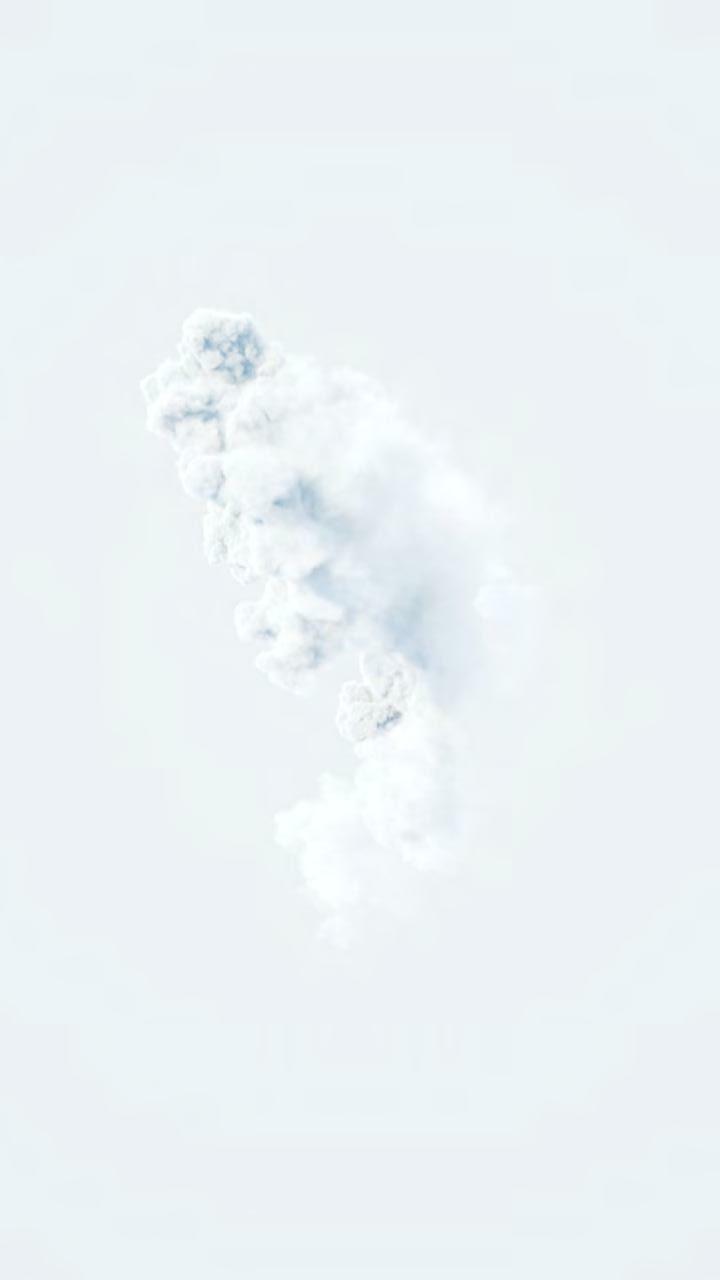
UNIT 1
Sequence 0 Mind Map
Sequence 1 ¬ Find and Compare
Sequence 2 ¬ Read and Write
Sequence 3 ¬ Watch and Make / perception / illusions / types of spaces
Sequence 4 ¬ Analyse and Communicate / anamorphosis
RE:Mind Map / futurism / the blind people / time / technology / liminal spaces
RE:Sequence 4 ¬ Analyse and Communicate / perception: senses experiment
RE:Sequence 4 ¬ Analyse and Communicate / perception: morten heilig
Sequence 5 ¬ Scentscape
RE:Mind Map / proprioception / synaesthetic / neuroarchitecture / neurourbanism / shitsukan
Case Studies / chocolate room - edward ruscha / hazelwood school - alan dunlop architects / symbiotic seeing - olafur eliason / the art of scent - diller scofidio + renfro / ballatine’ s time slowing experience - bompas and parr
OLFACTION
1 - picadilly circus underground station
2 - the unlabeled scented experiment 3 - fragrance wheel 1.0 4 - fragrance wheel 2.0
Dialogue
1. maia garau
2. saskia wilson brown
Natural Air Ventilation
Architectural Precedents
1. bloomberg eu headquarters - foster + partners 2. eastgate harare - mick pearce 3. earthenwind - bat el hirsh
1. olfactoscape v.3 - maki ueda
2. the art of scent - chandler burr
3. olfactory labyrinth v.4 - maki ueda 4. scent drop - harvey + john 5. the state of you - aisha al sowaidi
6. van gogh digital exhibition - image totale
7. resurrecting the sublime - alexandra d. ginsberg
UNIT 3
Realisation
Sequences were exercises the instructors provided to the students to personally explore their spatial environments. In sequence 3, I was required to make a video. I took this opportunity to explore the spatial and atmospheric qualities in the city of London. My current research of interest started with the lingering thought of questioning the spatial experiences one goes through when entering into any spatial surroundings.



This was an observation to try and record my senses (wavelengths) while standing in the the Vauxhall Pleasure Gardens.

When I first approached sequence 4, I concluded with an experimentation on anamorphosis / optical illusion. It occurred to me that this observation was only involving the sense of vision. I revisited this sequence / exercise, and attempted on experimenting with the human’s five common senses [sight, hearing, taste, touch, and smell].
Morten Heilig, the inventor of Sensorama, came across in one of my readings. He believes our senses come to us in these following proportions: Sight 70%, Hearing 20%, Smell 5%, Touch 4%, and Taste 1%. I wanted to visualise the proportions better and made a physical model to examine this curiosity of mine. Through this model, it is fairly evident that we, humans, are visually dominant creatures.
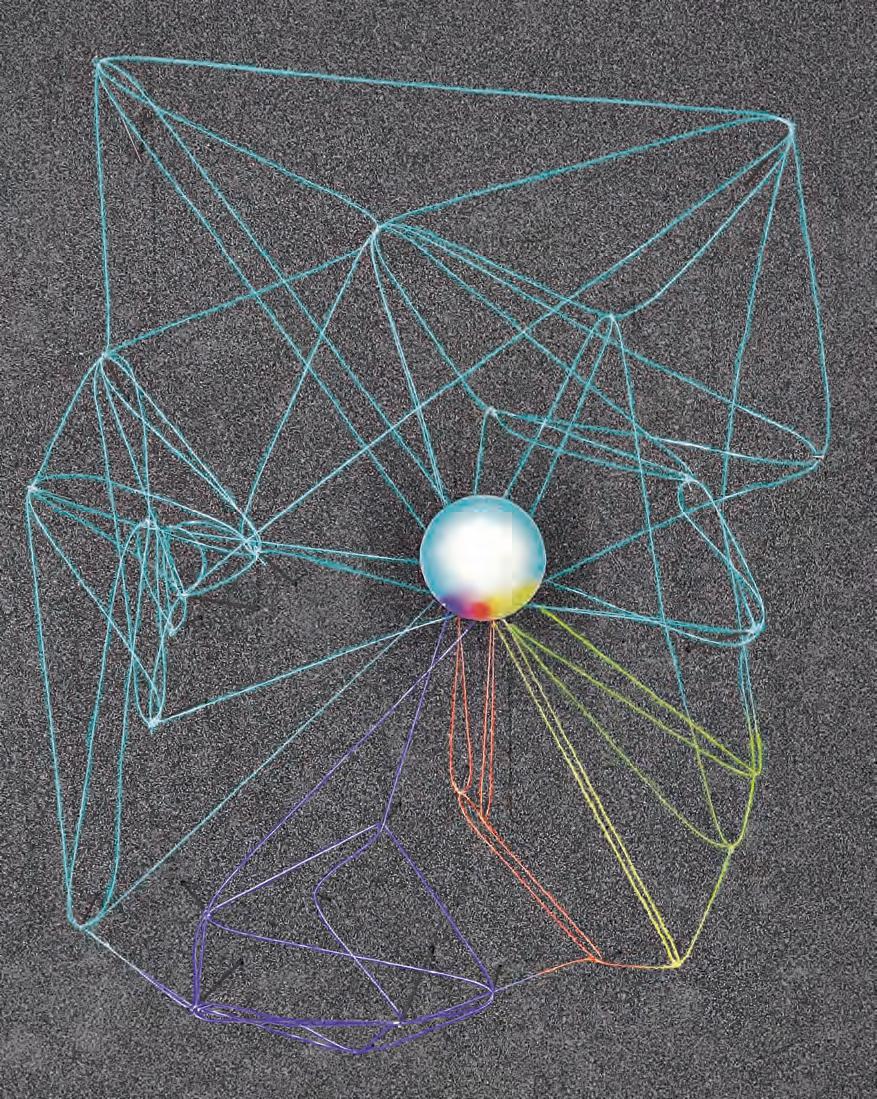
Hearing 20%
Tou c h 4%
Tast e 1% Vision 70%
Morten Heilig - The inventor of Sensorama and a pioneer in the virtual reality technology. Heilig believes the common human senses are distributed in the following graph shown above.
Humans experience the world, and react to it in many ways; subtle and obvious, concrete and abstract. Whether environments are developed through natural or man-made phenomena, we perceive and interact with spaces through multiple senses. Multisensory design refers to the creation of design experiences which encompass more than just one of the five common senses (touch, smell, taste, sight, and hearing).

People (Fragrance, Deodorant, etc.)
Food
Greens (Trees, leaves, flowers, etc.)
Waters (Rain, River Thames, etc.)
Nil (Cold air, nothing)
Unknown
From my readings and observations, there were numerous architectural references and articles inquiring to the sense of sight or hearing, but not the sense of touch or taste, notably the sense of smell. I attempted to record odours by creating a scentscape and recording all of the aromas or scents I encountered on my walks.
21_appetite 22_food obtaining urges including hunting and killing 23_humidity 24_hormonal sense 25_pain - external and external 26_mental or spiritual distress 27_sense of fear 28_procreative urges 29_sense of play 30_ Sense of physical place, navigation senses, position of celestial bodies 31_sense of time 32_sense of electromagnetic fields 33_sense of weather changes 34_sense of emotional place 35_sense of self
46_psychic capacity 47_sense of biological/astral time 48_the capacity to hypnotize other creatures 49_sense of relaxation 50_sense of pupation 51_sense of excessive stress and capitulation 52_sense of survival 53_spiritual sense
36_domineering and territorial sense 37_colonizing sense 38_horticultural sense 39_language and articulation sense 40_sense of humility 41_senses of form and design 42_sense of reasoning, including memory, logic and science 43_sense of mind and consciousness 44_intuition or subconscious deduction 45_aesthetic sense 53
Dr. Michael Cohen, an ecopsychologist, and program director of the Institute of Global Education, determined that there are approximately 53 senses and sensitivities, though not all of the senses and sensitivities listed by Dr. Cohen apply to the study of spatial design. For example, of Dr. Cohen’s 53 natural senses and sensitivities, sense of proximity may be spatially related; however, sense of pupation is not.

“THE DOMINANCE OF THE EYE AND THE SUPPRESSION OF THE OTHER SENSES TEND TO PUSH US INTO DETACHMENT, ISOLATION AND EXTERIORITY.”Photo / Knut Thyberg
Within the past few decades, we, visual-dominant creatures, have advanced considerably through the amelioration of digital technology. This has substantially heightened our sense of vision. Further in this on-going evolving COVID-19 pandemic era, we are heavily relying on screen-based technology, due to a huge population of workers who are working remotely from home. We are straying away from our non-visual senses in all sorts of ways which affect our sensorial experiences, and are relying more and more uniquely on our sense of vision. Humans observe their surroundings by combining all their senses to create coherent and complex experiences. By neglecting our other senses, touch, sound, smell, and taste, these realised environmental designs diminish our sensorial experiences and can lead to complications such as sick building syndrome and seasonal affective disorder. We, humans, are sentient beings; therefore, we should not neglect our non-visual senses.
Under the umbrella of multisensory design, olfaction is an underappreciated and understudied sense. Within the spatial design industry, olfaction is often ignored. Morten Heilig, the inventor of Sensorama and a pioneer in virtual reality technology, has stated that only 5 percent of how we perceive our surroundings comes from the sense of smell. (Payatagool C., 2008) However, this ignores that humans have over 400 scent receptors, giving us the ability to distinguish over 1 trillion scents. A typical adult inhales and exhales approximately over 11,000 litres of air every day. (Souza E., 2020) When we inhale, olfactory signals travel directly to the limbic system, a part of the brain that evokes memories and emotions. This suggests that the sense of smell can affect our overall sensorial experiences to a far greater extent than has been recognized. (Williams S.C.P., 2014)
How can scents be incorporated into the design process of interior spaces? How will the implementation of olfactive elements in our spatial designs benefit the society? My experiments, research and discussions, which have been self-conducted or in communication with art or design focused professionals, have inspired an experiential spatial realisation to focus on olfaction.
Humans can identify more than one trillion odours through a process that starts with microscopic molecules. We perceive these molecules by inhaling them through our nose or mouth. Once inhaled, they reach an organ in the upper part of the nasal cavity called the olfactory epithelium, which is covered with cilia. Cilia have olfactory receptors that capture molecules. Humans have approximately 400 receptors, each of which only takes a small part of the inhaled molecules. Multiple receptors are required to identify a single molecule. Each receptor then activates a part of the brain called the olfactory bulb. When a molecule triggers multiple receptors, different parts of the bulb are activated. These regions then form a unique olfactory map that helps to classify and identify the object from which the molecules originated.
molecules olfactory epithelium cilia olfactory bulb

In this experiment, the course director wanted to hold an interim student exhibition to showcase students’ progress and works. An opportunity arose to conduct an experiment with the attendees from various cultural backgrounds. The objective was to understand whether there was a unified consensus amongst people of different backgrounds for descriptions of specific aromas. In this scenario, Molton Brown fragrances were chosen because they were carefully crafted by reputed perfumers. Four fragrances were selected. Each perfume was filled into an unmarked spray bottle with a uniquely coloured lid. (1.1) A bottle would then be selected and whiffs of it were sprayed onto a clean blotter card. Then, the participants were prompted to write down the colour of the cap from the spray bottle, and a memory or emotion that was evoked upon whiffing the blotter card. A noteworthy discovery is that initially most participants would try to identify what the scents were; however a large number of them had trouble identifying Pine and Patchouli, Coastal Cypress and Sea Fennel, as well as Milk Musk. They would associate these unidentified scents with a life experience they had encountered before.
These fragrances are a complex blend of scented oils. The discoveries shown below indicate that it is quite a difficult task to have a universal classification of perfumes due to the complexity of the amalgamated scents.


EAU DE TOILETTE
TOP Orange, Bergamot, Mandarin
HEART Neroli, Cardamom, Galbanum
BASE Musk, Ylang-Ylang, Cedarwood
RESPONSES
“CoVID-19”
“Refreshing”
“Wine, Christmassy”
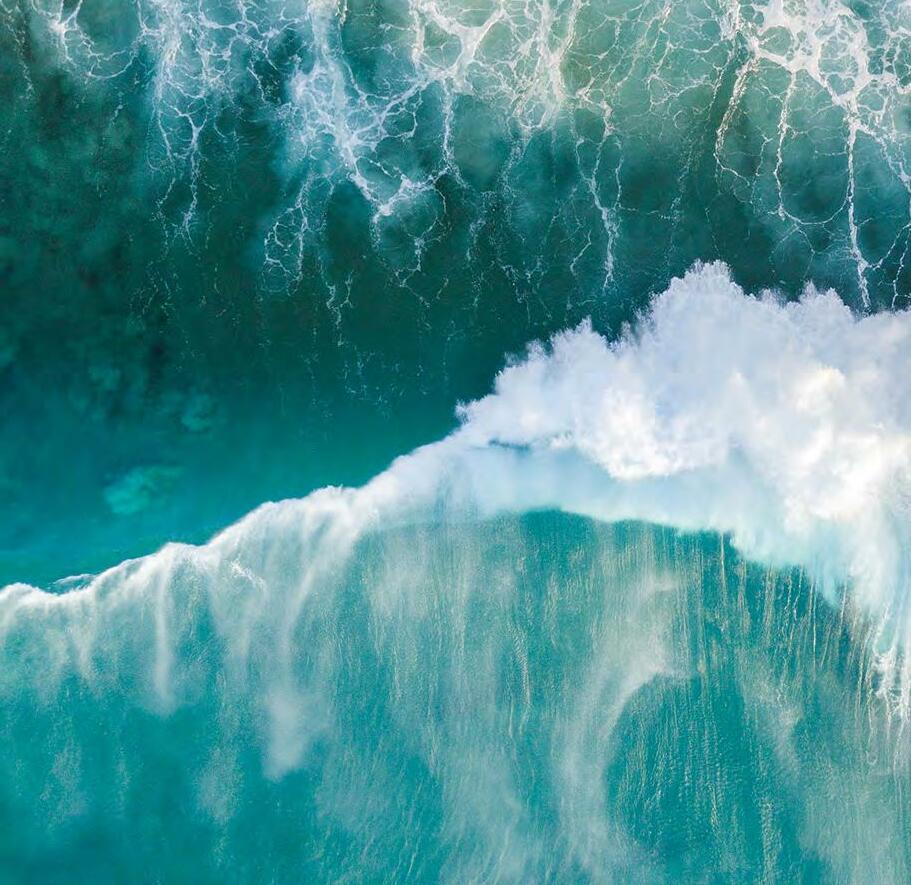
“A drive to the beach!”
“Chocolate Orange / Roller Disco”
“Fresh”
“I like, handwash smell fruit”
“Spicy”
“Peace, Temple”
“Reminds me of my holiday to Cancun”
“Makes me feel comfortable + safe, smells like my mom’s perfume”
“My mom when I was little - Bittersweet” “Trip in Thailand!!”
“Like woman perfume, elegant, sweet, flower”
“Reminds me of a flower garden near my childhood home” “Remind me of cold, flu, winter, sore muscles”
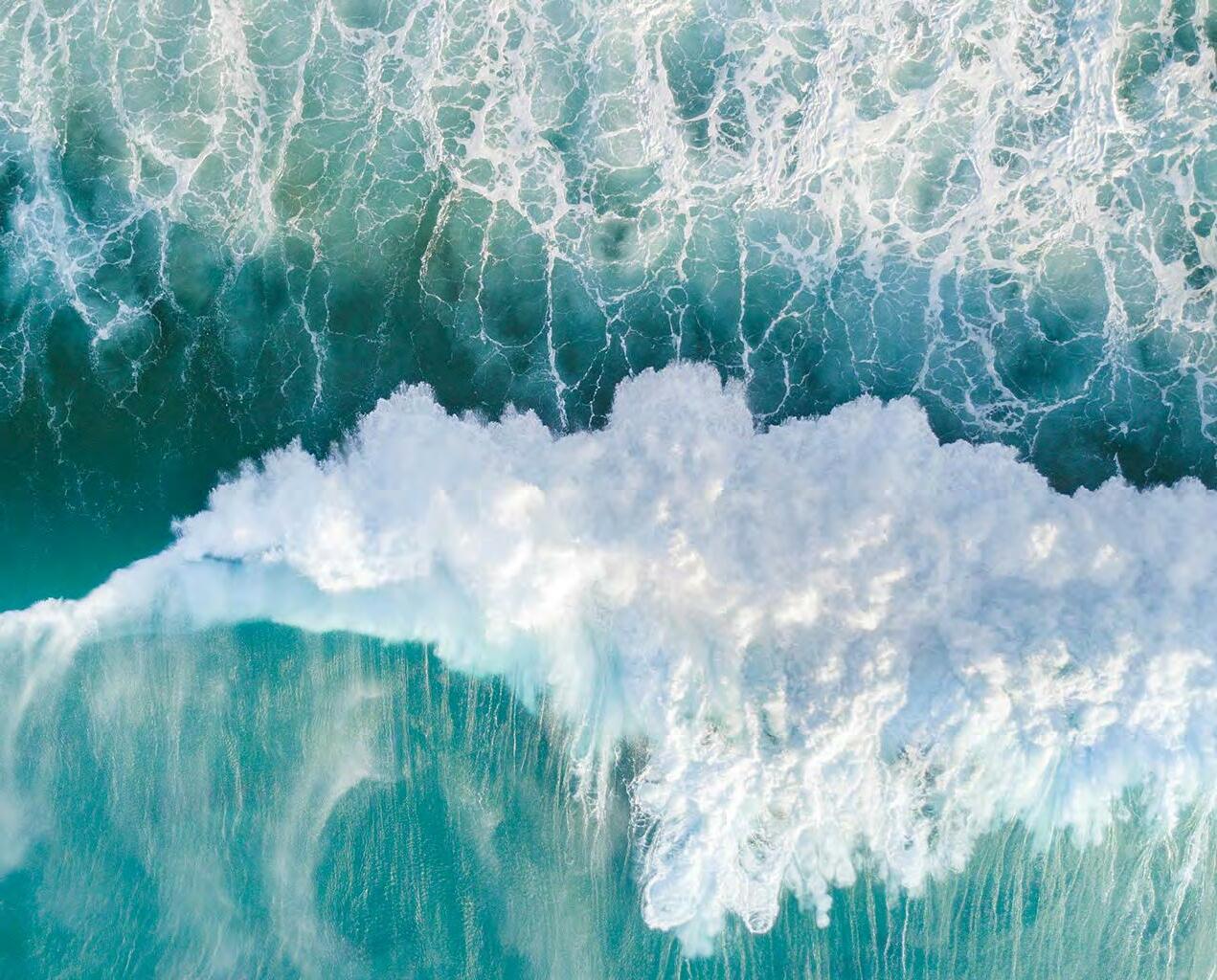

TOP Pear and Peach
HEART Musk, Ambroxan, Vanilla
BASE White Cedarwood, Tonka Bean
“Beauty and youth”
“Cold syrup”
“Children, park, platicine.”
“Sweet: smells like a cake”
“Outdoor garden”
“Reminds me of an olive garden”
“Intelligence”
“Calming”

“Norway / Mom”
“Car Perfume Circa 1975 / Slight Excitement”
“Being a teenager”
“Home :)”

EAU DE TOILETTE TOP Pine, Juniper Berries, Cinnamon HEART Red Fruits, Suede, Amber BASE Patchouli, Vanilla, Musk
“Grape / Sweet”
“My mom”
“Gives me comfort. Reminds me of my mum” “Sandalwood, beachy - heat, sand, salt.”
“Intriguing”
“Posh Hotels”
“Sad... Wanna cry :’(” “Sexy.”
“It smells like pine, but also a fire burning. It smells familiar.”
“Remind me of an old perfume my mum use to have” “Man, childhood”
TellArt, an interdisciplinary experience design studio, co-designed guest experiences for the United Arab Emirates’ Host Pavilion at Expo 2020 Dubai (2.1). Maia Garau, TellArt’s strategy director, sat for an interview with me to discuss her involvement in designing guests’ experiences to heighten attendees’ sensorial participation with olfactive elements in an enclosed space. Garau explained that the Expo 2020 Dubai was a rendezvous for the collective intelligence of talented individuals from all over the world, as well as a visual exhibit of the UAE’s history, culture and values.
During the design process, several key designers including Garau were chosen to execute and oversee the perfume manufacturing procedures that would embody the vision of UAE’s “desert of dreams”. Three different fragrances were fabricated and then placed at the entry, centre stage, and at the exit of the pavilion. The scents were released at these locations using calibrated professional-grade diffusers. Garau said that the scent diffused at the centre stage frequently went unnoticed by visitors due to the expansiveness of the interior layout. She explained how the Middle East’s history and culture are deeply permeated with the world of fragrances. Senior leaders and other important people in the community are commonly associated with a bespoke blend of aromas which can be experienced in places these people are associated with such as their personal workplace and accommodations.


Garau said that perfumers, and olfactive artists have a highly developed vocabulary to enumerate the specifics of their olfactive explorations. These professionals have a multitude of experiences working with scents, thus allowing them to pinpoint specific olfactive notes using a widely developed word-palette for aromas. By contrast, she stated that people who have untrained noses, describe scents by associating them with something they have encountered in their lives, not as specific olfactive notes. This was identical to what I learned in Findings 1.0. When people cannot pinpoint what an exact scent is, they try to find an association with their past experience.
In Findings 1.0, the catalyst was the use of perfumes, which are a complex blend of oils and aromas. The objective of this experiment was to simplify the previous experiment by using one single scent than a perfume which is a combined blend and mixture of distinctive oils and aromas. The participants’ experience of scent exposure appeared to be hindered or confused by the variety and complexity of fragrance oil mixtures.
As previously stated, the olfactive signals travel to the limbic region of the brain, which is a portion of the brain that regulates memories and emotions. With that in mind, I researched and used American psychologist, Robert Plutchik’s, emotional wheel as a springboard to limit and cap the number of emotional keywords I was using while smelling a scent. I developed my own emotional fragrance wheel, to bridge and correlate emotions and scents with the assistance of staff from California’s Eden Botanical, who helped me with scent selections, as well as employing Austrian perfumer Paul Killer’s fragrance wheel. (3.1) I used myself as the conduit and testing subject. I limited my responses by using the multiple choice methodology under three categories: thermal properties, individual fragrance oils, and a list of emotions. The intent was to establish a proper use of parameters to unveil this experiment to a larger audience. The objective was to find associations between scents and human emotions.

I gathered a small sample of people, who volunteered to participate in this survey. (4.1) The approach was to simplify the experiment from Findings 1.0 by disentangling the complexity of the fragrances. Single notes were used rather than complex fragrances in order to be able to attempt to produce more accuracy in the data gathering. My hope was to better understand how humans perceive scents and form meaningful sensory associations.
In consultation with the staff of Eden Botanicals in California, 23 essential oils were selected for this experiment. These aromas are all regularly utilised in aromatherapy or perfumery.
With 7 participants, a pattern seems to have emerged. Although individuals’ reactions or emotions varied from one another, they could all be categorised as either positive or negative. For instance, as depicted in the diagram, participants responded favourably to the fragrances of lemon and orange. (4.3) On the other hand, opinions on the eucalyptus were divided. Three participants had positive reactions and the other three had negative responses.

Participant 1 / Born: UK / Home: Poland / Age: 25
Participant 2 / Born: Taiwan / Home: Canada / Age: 33
Participant 3 / Born: Japan / Home: China / Age: 24
Participant 4 / Born: China / Home: China / Age: 24
Participant 5 / Born: Taiwan / Home: Canada / Age: 39
Participant 6 / Born: Taiwan / Home: Taiwan / Age: 31
Participant 7 / Born: UK / Home: UK / Age: 59
4.3 The collective results of the fragrance wheel experiment. The white area in the chart depicts positive emotions, and the grey area depicts negative feelings.

On the off-chance that this experiment can be continued with a larger sample size, it may be possible to develop a philosophical methodology for spatial wayfinding using the sense of smell. Odours are rarely received with indifference. They can trigger human memories and emotions in a similar way that architecture evokes a “sense of place”. In combination with visual architectural cues, odours can either enhance or distort personal responses to architecture. An unpleasant odour has the power to turn the spatial experience of an otherwise aesthetically pleasing room into a bad memory of a putrid place. Adding aromas to architectural spaces would add a layer of experience that provides more positive sensorial stimulation with fewer random, uncontrolled odours, than is often the case.
Furthering the exploration of how the sense of smell affects human responses, a question arose: are fragrant building materials a possibility?
If a scent can be retained in a building material, it may create limitless possible ways to change people’s spatial responses. From the statistics of Findings 4.0, the scent of lemon is a highly positive aroma; therefore, putting that scent near a ticketing booth of an indoor entertainment centre could elevate people’s positive emotions upon entering the facility.
In this experimental scenario, wood was selected for its sustainability, flexibility and availability within the construction industry. Wood is a feasible alternative to soundproofing options, such as acoustic panels. Wood also retains its thermal properties. Mahogany is a common wood used for furniture because of its natural aging features, light weight and resistance to rot and dampness. Furthermore, a majority of people find the aroma emanating from mahogany to be rather pleasant.
Lamentably, few academic research articles cover the subject of scent retention in materials. Saskia Wilson Brown is the founder and executive director of the Institute for Art and Olfaction in Los Angeles.I was fortunate to join Brown for a telephone conversation on the subject of scent retention. Brown mentioned two possible ways of how scents may be activated: passively distributed or actively rubbed and sniffed. The level of humidity and heat levels in a space heavily contributes to the amount of time a scent lasts in a space. With her experience and expertise, Brown hypothetically broached these two variables by applying a scented oil onto a wooden building material. She found that aromas would last longest on unvarnished wood. The duration of a scent was also contingent on the type of scent. Base notes, such as sandalwood, cedar wood, or ISO e super, would last the longest. Floral scented aromas diminishes the quickest.
In short, it is not possible to preserve scents in a wooden building material. When the most enduring base notes are used in the wood, the aroma can last up to a maximum of a week before needing to be replenished.

Maki Ueda is a Japanese artist based in Tokyo and Okinawa who has produced a series of works titled, “Olfactorscape V.3.” In the exhibit called “Deconstructing a Rose,” Ueda conducted observations on the flow of scents through space, focused on how the notes mix in the air. (6.1)
Ueda is considered one of the pioneers of olfactory art. In this exhibition, Chanel No.5 was the selected blend of fragrance oils chosen. As shown below (6.2), selected notes of Chanel No.5 were sprayed onto a curtain encasing a closed cylindrical space. Visitors were asked to breathe in the amalgamated compositions of Chanel No.5 while moving through various locations inside the space. Ueda decomposed the fragrance and varied the location of the notes to explore a multi-dimensional applicability of aromas in an interior space.
White curtains were the only visual element participants encountered in the space, in order to keep their focus primarily on their sense of smell. Lightweight linen was used because of its ability to absorb odours and its sensitivity to air currents in the room. In this precedent, the visitors were guided indeliberately by the various olfactive notes sprayed on the curtains, which eminently presages the possibility of spatial wayfinding using the sense of smell.

individual scents dispersed throughout the curtain...Photo / Maki Ueda
6.2 Plan View - Visitors would immerse themselves into the curtain to smell the mixed fragrance notes of Chanel No.5 when they stand in the center of the curtain. Dimensions are only an approximation.
6.4 Elevation - Maki Ueda distributed what she considers as key fragrance notes for Chanel No.5
Note: Not to scale. These drawings are only used for observation purposes only.


Another sensory exhibit by the same artist, Maki Ueda, titled, “Find the Spot for Ohanami,” explored the connections between olfactory signals, movement, and space. This olfactory exhibition was inspired by WeberFechner’s law which attempts to quantify the perception of changes caused by stimuli. The culminated observation from this precedent was that the points of interaction between the visitor and the scented art mediums were approximately between 1200mm and 1500mm (4’-0” to 5’-0”) from the ground. This height was thought to be suitable to people of many cultures, and backgrounds.
Ohanami means “flower watching” in Japanese. Eighty-one bottles were suspended from the ceiling and arranged in a 9x9 grid and spaced 700mm apart from one another. Visitors moved around the room stopping to inhale the scents of individual bottles with the goal of deciding which bottle of Ohanami contained the most concentrated aroma.
what s the distance between the mediums? why is the point of the engagement at that height? optimum height?

7.2 Plan View - The 3 pinpoints shown on the floor plan are where the sakura aromas are the most intensely scented. Visitors would navigate through the exhibition use their sense of smell to find the pinpointed spots.
7.3 Elevation View - This drawing shows the approximated height of the olfactive medium.
Note: Not to scale. These drawings are only used for observation purposes only.
This scent exhibition was designed by inventors, Richard Harvey and Keivor John from the United Kingdom for Le Grand Musee du Parfum in Paris.
Common fragrances such as patchouli, jasmine, bergamot, and orange blossom were instilled into a diffusing copper orb mechanism called, the White Drop. There were a total of 25 copper orbs. When visitors picked up the White Drop, an accelerometer would detect movement which would activate and diffuse one of the twenty-five available fragrance notes. Thereafter, the visitor would hear an audio that explained how the ingredients were used in the world of perfumery.
In short, as a visitor, we customarily experience spaces just by being housed in the shell of a space without having to objectively activate a mechanism to enhance our sensory experience. Through this observation, a rubbed and sniffed implementation would seem to be highly intentional in an interior setting, and thus be disparaged in comparison to “passively distributed”.
pattern? height distribution seems very similar to Maki Ueda’s Labyrinth V.4
how does this work?

8.3 Elevation - This elevation shows the approximated heights of the 25 olfactive mediums.
Note: Not to scale. These drawings are only used for observation purposes only.


Vincent Williem van Gogh, a Dutch Post-Impressionist artist, was an influential painter whose works depict strong emotional depths. Audiovisual experimentalists Annabelle Mauger, and Julien Baron have invented a new methodology to reassess and re-appreciate Van Gogh’s paintings when viewed through a technological lens. The Imagine Van Gogh – The Immersive Exhibition, enhances visitor’s appreciation of Van Gogh’s paintings. Technology is employed in the exhibition to alter visitors’ perception of visual scale, sound, and smell.
In this case study, ScentAir, a commercial-grade scent machine, dispersed bespoke floral scents throughout the venue, evoking Van Gogh’s vivid personal memories. ScentConnect, a cloud-based software, controlled and monitored the HVAC systems, delivering scents seamlessly throughout the exhibition.
From a different angle, this precedent is a more developed version of my experiment - Findings 2.0 - TellArt’s Desert of Dreams exhibition, where a smart computing system was applied to disperse scents throughout the venue. It seems quite evident that there is an emergence that the 21st century artists and designers are embracing more senses than just sight or hearing, They are creating multi-sensory experiences with and without the use of modern technology.

how do they disperse the scent using tech?
ai? utilising sensors?
An investigation was conducted to resurrect something previously unknowable: the odour of extinct flowers. This was done in a collaboration between artist Alexandra Daisy Ginsberg, olfactory researcher and artist Sissel Traas, and an interdisciplinary team of researchers and engineers at Ginkgo Bioworks.
The subjects of this investigation were 3 extinct flowers: the Hibiscadelphus Wilderianus Rock, last found in 1912, the Orbexium Stipulatum, last seen in 1881, and the Leucadendron Grandiflorum, last found in 1805. Specimens of these extinct flowers are stored at Harvard University’s Herbaria, where 5 million various specimens are housed. A team of paleo geneticists from the University of California retrieved the plant tissue and gene sequences. The sequences were then passed to the team of researchers and engineers at Ginkgo Bioworks, who had identified the gene sequences that go into the formation of the odour molecules of these extinct flowers. Visitors to the exhibition were able to get a whiff of how the extinct flowers may have possibly smelled while viewing a 3D video of the plants’ native habitats.
The observation from this study was on the interplay of creative expressions and technical engineering, in which artists and designers have been exposed to the great possibilities of kaleidoscopic multi-sensory experiences that may arise in the 21st century.




Through personal experiments and observations of modern precedents, it appears that some scents may possibly become globally classifiable aromas, which could be implemented into designs to heighten sensory experience, thereby improving people’s spatial experiences and wellbeing.
In an interior space, thermal comfort is “one of the indoor environment factors that affect health and human performance.” (ScienceDirect, 2014) If our environment falls outside of 65-80 degrees Fahrenheit, our sensitive bodies would react. The human body constantly generates heat and we sweat to remove heat from our bodies. Airflow surrounding the body removes heat by converting perspiration from liquid to vapor. The vapor raises the humidity level in an enclosed environment.The velocity of air circulating through a space influences our thermal comfort through perspiration and convective exchange. If the humidity is high, evaporation of the sweat we are generating slows down. If the windows and doors are closed, there is no air exchange, meaning we are only breathing the air inside a confined space. If this enclosed air circulation is prolonged, we become vulnerable to contaminants discharged into the air from building materials and furnishings. In an enclosed space there will also be a higher percentage of carbon dioxide expelled from our lungs. This may result in dizziness, sleepiness, or even allergies.
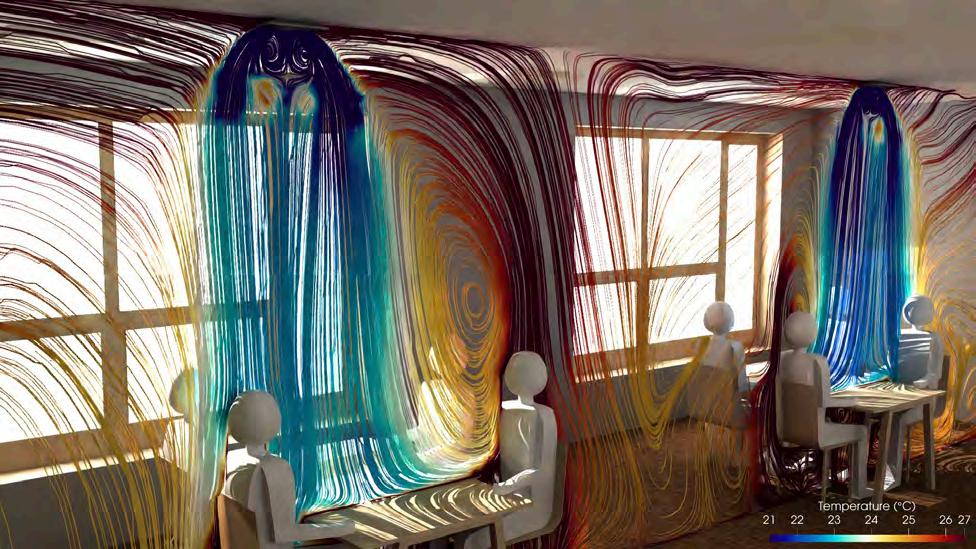
The Eastgate Centre, a biomimicry-inspired building designed by Mick Pearce is largely made of concrete and brick. Pearce, a Zimbabwean architect, modelled the natural air ventilation of this building after a termite mound. (12.2) This building does not have a traditional air-conditioning or heating system, but it can regulate the temperature throughout the year using significantly less energy than conventionally heated/cooled buildings.
Concrete and brick have a high heat mass and can absorb heat without causing temperature fluctuations. The building’s small windows were purposefully designed to reduce heat absorption. The termite mound wasn’t the only nature-inspired inspiration Pearce employed, he also utilised the heat dispersion concept from cactus. (12.3) Due to its spikes and ridges, which help the plant to diffuse the heat out at night, cacti are able to survive in high temperature environments. When the sun shines through the cactus-like facade of the building, it acts as a shading system.



Hot air is less dense than cold air; therefore it rises within a space. A stack ventilation is a vertical ventilation process that extracts hot air through an existing system at the roof. Inspired by a termite mound and implementing the concept of stack ventilation (12.4), the cool air at night is drawn into the building by low powered fans in the base of the building. Concrete absorbs cool air, which reduces the overall temperature of the building. When the temperature rises during the day, warm air is ventilated and extracted through the chimneys.

Bringing in ancient traditions from the middle east in combination with modern technology, inspired by ancient pottery, Bat el Hirsh, a young artist, designed these multifunctional 3D printed ceramic blocks. The stacking of ceramic blocks, not only, act as a decorative screen, but also, as an alternative of natural air circulation for interior spaces in hotter climates. (13.2)
With innovations drawn from biomimicry and the development of new technologies, designers and architects are able to address the topic of air ventilation with new methodologies. This has the potential to alter the habitual shapes of the constructed spaces we dwell in.


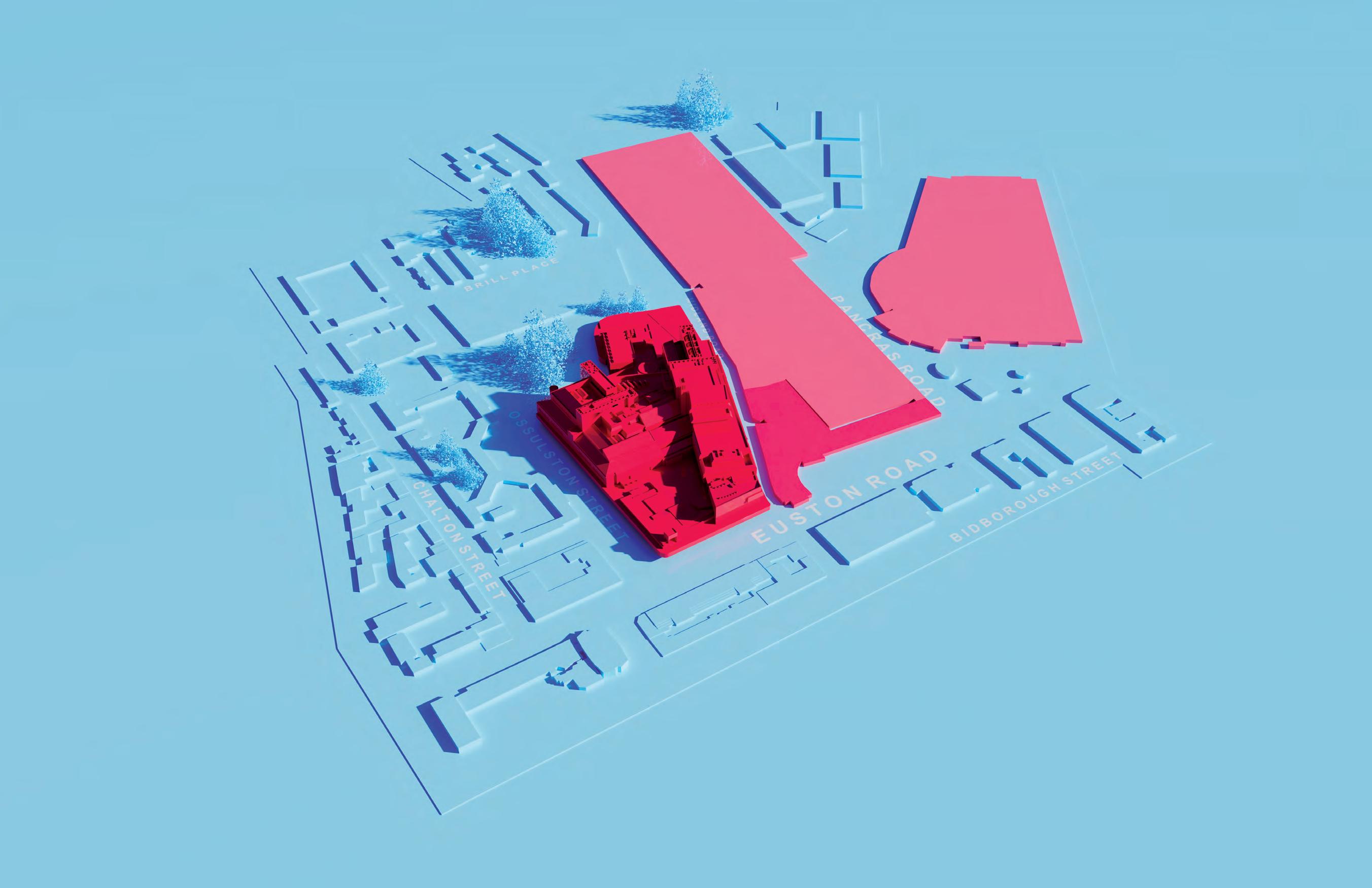
The British Library, designed by architect Sir Colin St. John Wilson in partnership with MJ Long, is the national library of Great Britain and one of the greatest research libraries in the world. Within its walls are more than 170 million items, including rare manuscripts, music, printed and electronic books, and various other collections. The library was given a Grade 1 listing for its architectural interest and craftsmanship by Heritage Minster, Tracey Crouch.


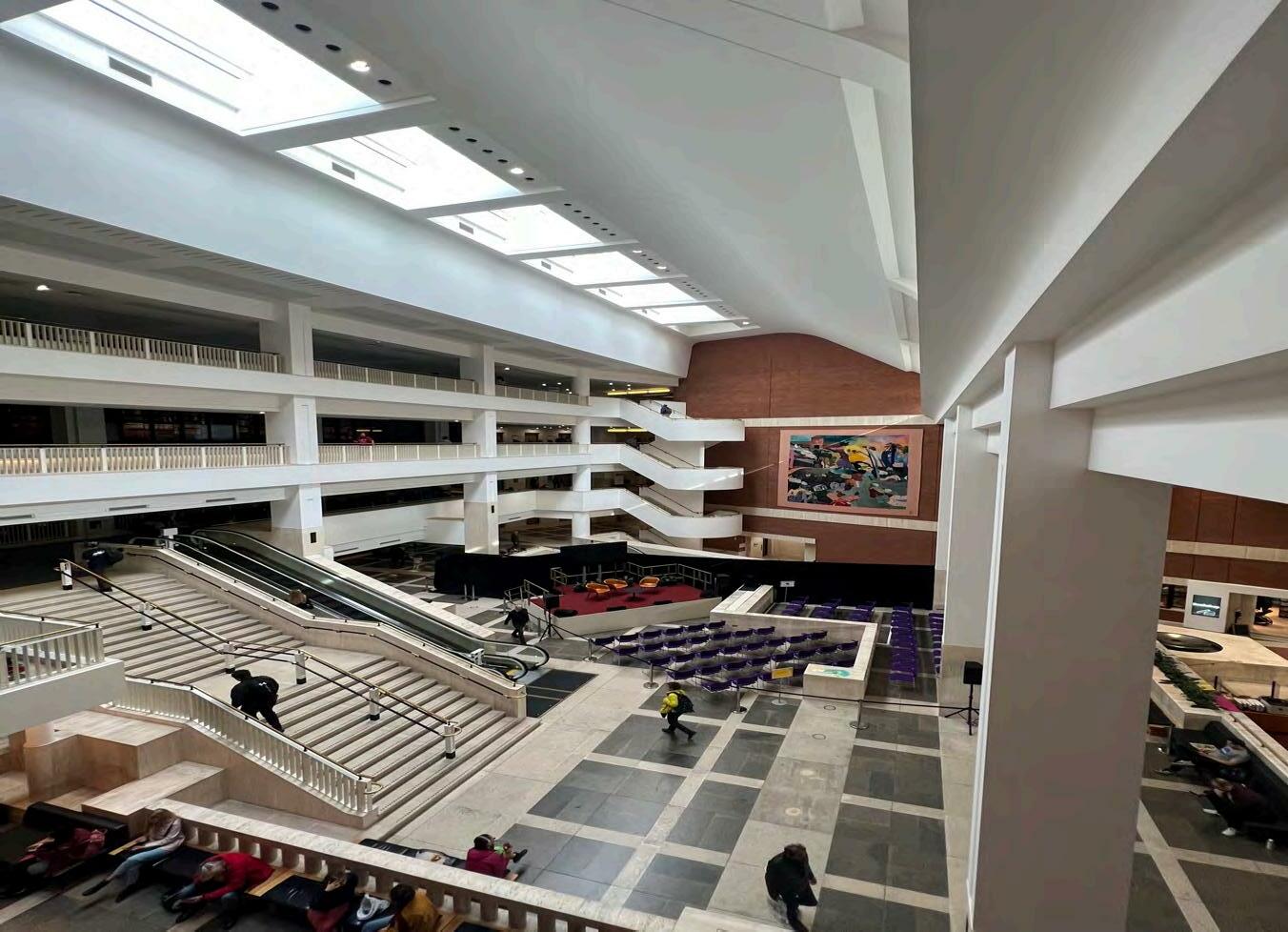
The exterior of the library is made of Victorian red bricks, which match the building’s neighbours, such as the St Pancras Station and Renaissance Hotel. The edifice’s interior entrances are sheathed in Portland stone, Purbeck stone, Hauteville and Travertine limestone, which all encapsulate various types of snails, oysters and other kinds of fossils. The entrances are composed of hard surfaces that gradually soften on the upper floors, encompassing finishes such as carpets and wood.
Wilson wanted to implement elements that elevate the tactility of the space. He used limestones embossed with real fossils, wooden benches upholstered with leather, as well as, leather-wrapped handrails to encourage and attract visitors to touch them. The notion behind this was to “balance the large scale demanded of a building with innumerable collection items.” (Morgan C., 2018) Sir Colin St. John Wilson designed this building with hints of sensory design. The British Library’s public vision is to be “the most open, creative, and innovative institution of its kind in the world.” (“British Library”, n.d.) With that in mind, there is no better establishment to propose an experiential olfactive spatial installation within the parameters of the British Library.




The British Library is not only an embellishment in the world of architecture, but it is also one of the prime locations that houses the largest amount of books, artworks and various written works. It was not easy to get authorization to conduct a small site measurement in this knowledge heaven. I was questioned and interviewed by the receptionists, security guards, and operators from the control room before I was allowed to perform a general site measurement.
In the preliminary stages of this research project, sensory stimulation has been the core focus of attention. As the project has progressed to be a more olfactive focused scheme, the essence of the project has become to accentuate and improve design practices and decisions that designers, artists, and architects make which influence dwellers of the spaces they design for. They may not understand the impact that this one-dimensional thinking brings to the spaces they create. Designing spaces for one sense alone, – most commonly the sense of vision - can sometimes lead to sick building syndrome.






During the school break in between the second and third unit, I had the opportunity to explore northern England and visited various heritage sites. Although these heritage sites are quite distant from one another, they all possess very similar environmental characteristics. (14.2) During the visit to the Rievaulx Abbey, as I gazed upon these ruins, which are open to the air and sky, I thought of the word - “ascension” Ascension means to rise upwards, usually from a lower base point of attachment. The designs of monasteries around the world often encompass extremely high ceilings. In Christian belief, ascension is derived from the believer’s conviction that Jesus Christ was glorified and exalted after his death and resurrection. For instance, York Minster, completed in 1472, is officially the Cathedral and Metropolitical Church of St. Peter in York. The overall design of the historical building induces visitors to gaze upwards to emphasise the sensation of ascension. (14.1) Analogously, the description of ascension is evocative of the aforementioned stack ventilation. Although the overall notion of designing for churches and experimental spaces may be vastly different, the conceptualisation would be somewhat similar.

Middleham Castle Middleham / 1086




199 Steps Whitby / 657 AD


Mount Grace Priory Northallerton / 1398

Whitby Abbey Whitby / 657 AD

Rievaulx Abbey Helmsley / 1132





What does scent or odour look like? Despite being odourless, and colourless, air has mass and can expand. Gravity causes the air to be denser on the ground and lighter at higher elevations, making it more difficult to breathe high up in the mountains. Scents are carried by air, and when scent molecules are released from their source and carried on the wind, olfactory plumes are created. (15.1) Air carries odours into the human nose. Inhaling and exhaling disrupts the odour plume. Air usually cannot be seen by the human eye; therefore, most people think of it to be weightless. How do we visually represent air? To visually represent air to the human eye, we create forms or entities that seem light , transparent, and uplifted to portray what cannot be seen.







In this olfactive experiential installation there would be a library containing 100 books. There would be a reception area on the ground floor. The olfactive experiential spaces would be on the first floor. In addition, to visually accentuate the previously mentioned concept of light and ascension, the first floor would have a larger footprint than the ground floor. (16.2) There would be 4 separate olfactive reading rooms. The door frame of each room would be encased with inductive loop detectors that would accept signals from radio frequency transponders embedded inside each of the books. Rules such as prohibiting the use of flash photography, food, drinks, sweets or gum would serve to reduce possible distractions for the readers and to be further sensorially stimulated. Additionally, this is an extension from the already existing requirements to the current British Library’s reading rooms. The employment of natural light throughout the installation would further emphasise the concept of light and transparency.

16.1 Preliminary sketches







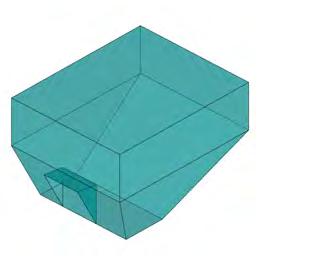





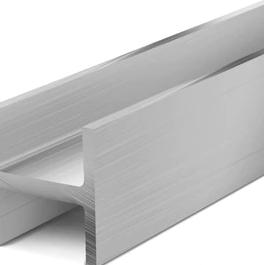
WHITE COATED STEEL STRUCTURE WITH EMBEDDED LED
GLAZING STRUCTURE







In order to further explore and materialise the olfactive element for this installation, I consulted with Maya Njie, a Swedish West African perfumer, who specialises in producing artisanal blended scents. In the diagram shown below are a combination of scents and/or aromas that were generated through research and from Njie’s expertise. (17.1) These notes are olfactive elements that would improve or bring about positive influences to people.






In this olfactive installation, there is a reading lounge area for the general public. (16.2) With Maya’s expertise, I was able to develop a prototype of the scent that would be dispersed into this area. Starting off with cashmeran musk, a soft and warm scented feeling of cashmere, as a base, Njie has mentioned from her experiences that this scent aids relaxation. This base is then followed by a tiny fragment of virginian cedarwood. The virginian cedarwood has hints of vetiver, a citrus note that aids with mental alertness, and the cedarwood provides a deep earthy relaxing aroma.The heart contains specks of bois de rose , and neroli. Oils from bois de rose or the rosewood tree offer hints of greens, woods, and floral notes. To balance the woodiness off, a snippet of neroli is added, which is a sweet floral honey scent and one of the most widely used scents in the world of olfactive perfumery. This blend contains Linalyl acetate and bergamot, which are hints of citrus notes, that are both known for improving alertness and concentration. The overall encompassing notion of the development of this scent is to improve mental concentration for the readers, while diffusing scents of relaxation. The prototype scent, OLF.00, dispersed into the lounge would be heavily diluted, where the visitors would engage with the act of reading and unnoticeably discover the lingering scent thereafter.

To create a more purposeful olfactive experience, four more scents will be introduced. These scents would only be accessible in “the olfactive space.” The four scents are tailored specifically to particular genres of books.
Anticipation, tension, fear and anxiety are words used to describe the thriller genre. Petrichor, which evokes the aroma of rain, serves as the composition’s underlying support, along with sandalwood and cedarwood. The centre of this blend, OLF.01 is highlighted by marine notes and geranium. The top notes of this composition are bergamot and fennel. According to Njie, the blend of cypress, fennel, and bergamot notes inexplicably creates a metallic tone that has a eerie, and unsettling quality. The OLF.01 is the olfactory image of an eerie atmosphere of a perriot mask-covered pathway leading to an uncanny house on a remote island surrounded by unending ocean waves.
A common genre in the world of books and novels is fantasy. This genre is filled with imagination, eccentricity and anticipation. Animalic musk and sandalwood would be employed as the foundation of the scent. This would be followed by marine notes, cypress, and neroli. At the top of the scent would be Linalyl acetate, which is very reminiscent of the scent of petitgrain. The overarching composition of this scent, OLF.02, is to olfactively illustrate a sense of wilderness with subtle hints of

Romance is one of the selected genres for the installation, with it also being one of the most common book categories. Romance is usually associated with the sense of excitement and the mysterious sensation of love. A soft musk followed by vanillin would be used as the base of this scent, OLF.03, to give a very soft and warm base. The heart of the scent is ample with bois de rose , jasmin, and rose absolute, as rose is often associated with romance. In addition, the scent of rose also reduces stress and anxiety. A light topping off of the fragrance with mandarin will add some sweetness to the overall aroma, as well as, the scent having calming and relaxing benefits. OLF.03 is a delicate flower scent with a soft vanilla base that offers a glimpse of sweetness.
Curiosity, a desire to learn, and being puzzled are a complex emotional amalgamation that make up the genre of mystery. Cedarwood and cypress would be utilised as the foundation to evoke a deep, and earthy tone. Aquanal and bois de rose are substances that convey the impression of woodland and would form the scent’s heart. This mixture, OLF.04, would be topped with linaly acetate, bergamot, and fennel notes. This is an olfactory translation of a nighttime scene with a lit-up wooden structure that is situated far from civilization.
+ rose absolute
bois de rose OLF.03
SOFT MUSK VANILLIN
jasmine + white flowers mandarin

ACQUIRING KNOWLEDGE OLFACTIVE STUDIES CONVERSATIONS WITH PROFESSIONALS FINDINGS 2.0 p.30-31 FINDINGS 5.0 p.44-45 EXPERIMENTS THE UNLABELED SCENTED EXPERIMENT p.24-29 FRAGRANCE WHEEL 1.0
p.34-36 FRAGRANCE WHEEL 2.0
p.37-43
PRECEDENT STUDIES
OLFACTOSCAPE V.3
p.46-51 OLFACTORY LABYRINTH V.4
p.52-55 SCENT DROP
p.56-59 VAN GOGH DIGITAL EXHIBITION
p.60-61 RESURRECTING THE SUBLIME
p.62-65
p.66-73
DETAILS THERMAL COMFORT
Conceivably, this ongoing research project will raise awareness to the value of multisensory design. The olfactive installation is an instance of how aromas and accommodated facilities will enhance sensorial experiences augmenting people’s perceptual qualities leading to improve people’s wellbeing. The Olfaction Design Process diagram bridges the relationship between the interior design process to this project’s design process by means of olfaction.
Olfaction is a subject harder to assess than vision. But that doesn’t mean that it should be disregarded. The way we perceive the spaces we inhabit is significantly influenced by our sense of smell. It should be given more value in the design process. Designers and architects are charged with creating aesthetically pleasing and functional spaces. An awareness of multisensory design possibilities will lead to a more well-rounded and healthy, multifaceted environment that will have a strong positive impact for our health and future.

Desai K. (n.d.). All House Related Solutions - GharPedia. [online] Available at: https://gharpedia.com/blog/typesof-wood-used-for-construction [Accessed 30 Apr. 2022].
Cavallari D. (n.d.). How Do I Choose the Best Mahogany Wardrobe? [online] Available at: https://www.wise-geek. com/how-do-i-choose-the-best-mahogany-wardrobe.htm [Accessed 30 Apr. 2022].
Estate Millwork (n.d.). Solid Mahogany Custom Closet Organizers | Estate Millwork. [online] Available at: https:// www.estatemillwork.com/mahogany-closet-organizers.html#:~:text=Mahogany%20is%20a%20great%20exterior [Accessed 30 Apr. 2022].
The Perfume Society (2017). These 5 tricks help your fragrance last longer [online] Available at: https:// perfumesociety.org/make-perfume-last-longer/#:~:text=The%20base%20notes%20or%20%E2%80%9Cdry [Accessed 30 Apr. 2022].
Missing Animal Response Network. (n.d.). How Long Can Scent Survive? [online] Available at: https://www. missinganimalresponse.com/lost-pet-help/how-long-can-scent-survive/ [Accessed 30 Apr. 2022]. Stinson, L. (2013). Odor Camera Turns Your Favorite Smells Into Memories. [online] Wired. Available at: https:// www.wired.com/2013/07/this-machine-is-a-camera-for-your-smell-memories/.
Murphy, K. (2017). One Day, a Machine Will Smell Whether You’re Sick. The New York Times. [online] 1 May. Available at: https://www.nytimes.com/2017/05/01/health/artificial-nose-scent-disease.html [Accessed 30 Apr. 2022].
Muuto. (n.d.). A Space for Being — Exploring Design’s Impact On Our Biology. [online] Available at: https://www. muuto.com/content/stories/theme-stories/a-space-for-being-exploring-designs-impact-on-our-biology/.
Archello (2019). A Space for Being | Google Inc | Archello. [online] Archello. Available at: https://archello.com/ project/a-space-for-being [Accessed 30 Apr. 2022].
Ueda M. (n.d.). MAKI UEDA - OLFACTOSCAPE 3. [online] Available at: https://www.ueda.nl/index. php?option=com_content&view=article&id=303&Itemid=875&lang=en [Accessed 30 Apr. 2022].
Verbeek C. (2012). [online] Available at: https://v2.nl/files/2012/works/olfactoscape-documentation/a-multisensorial-perception-of-space [Accessed 30 Apr. 2022].
Ueda M. (n.d.). MAKI UEDA - OLFACTORY LABYRINTH 5. [online] Available at: https://www.ueda.nl/index. php?option=com_content&view=article&id=302&Itemid=874&lang=en [Accessed 30 Apr. 2022].
Al Bawaba. (n.d.). Dubai Mall: Perfumery & Co Launches the Art of Scent Exhibition. [online] Available at: https:// www.albawaba.com/business/pr/dubai-mall-perfumery-co-launches-art-scent-exhibition-1145040 [Accessed 30 Apr. 2022].
Loci (n.d.). Art of Scent | Loci Architecture & Design Studio. [online] Available at: http://loci.ae/loci-184/ [Accessed 30 Apr. 2022].
Jeff (2017). Oh, by the way...: Scent Drops by Harvey and John. [online] Oh, by the way... Available at: https:// ohbythewayblog.blogspot.com/2017/02/scent-drops-by-harvey-and-john.html [Accessed 30 Apr. 2022].
Burr C. (n.d.). Art Emaar - Art of Scent by emaar9 - Issuu. [online] Available at: https://issuu.com/emaar9/ docs/2018.05.23_-_the_art_of_scent_-_201 [Accessed 30 Apr. 2022].
Natelee C. (2018). The Art of Scent | LOCI Architecture & Design. [online] Available at: http://nateleecocks.com/ the-art-of-scent/ [Accessed 30 Apr. 2022].
Walser, M.A. (2018). Scent station at ‘The Art of Scent’ exhibit, Dubai Mall. [online] You Say Dubai, I Say Hello! Available at: https://yousaydubai.com/2018/07/01/this-dubai-art-exhibit-really-smells/2018-06-21-19-49-06/.
Ueda M. (n.d.). OLFACTORY LABYRINTH VER.4. [online] Available at: https://www.youtube.com/ watch?v=R6jvXoV2PAI&ab_channel=MAKIUEDA [Accessed 30 Apr. 2022].
Ueda M. (n.d.). MAKI UEDA - OLFACTORY LABYRINTH 4. [online] Available at: https://www.ueda.nl/index. php?option=com_content&view=article&id=305&Itemid=877&lang=en [Accessed 30 Apr. 2022].
Center for Art Law. (2018). The Conundrum of Olfactory Art. [online] Available at: https://itsartlaw.org/2018/09/20/ the-conundrum-of-olfactory-art/.
Weber’s law | psychology | Britannica. (2019). In: Encyclopædia Britannica. [online] Available at: https://www. britannica.com/science/Webers-law.
Harvey + John (n.d.). Harvey & John | Scent Drop. [online] Available at: https://harveyandjohn.com/work/scentdrop/ [Accessed 30 Apr. 2022].
The Aficionados (n.d.). Le Grand Musée du Parfum Paris. [online] Available at: https://www.theaficionados.com/ journal/france/paris/le-grand-musee-du-parfum-paris [Accessed 30 Apr. 2022].
Lagios, V. (n.d.). Sensory Revelations: Le Grand Musée du Parfum, Paris - Design Father. [online] https://www. designfather.com/. Available at: https://www.designfather.com/le-grand-musee-du-parfum-paris/ [Accessed 30 Apr. 2022].
Imagine Van Gogh. (n.d.). About. [online] Available at: https://www.imagine-vangogh.com/about/#2 [Accessed 30 Apr. 2022].
Sayej, N. (n.d.). Here’s How Scents Quietly Became Part Of Art Exhibits. [online] Forbes. Available at: https:// www.forbes.com/sites/nadjasayej/2021/07/02/heres-how-scents-quietly-became-part-of-art-exhibits/ [Accessed 30 Apr. 2022].
Ginsberg A.D. (n.d.). Resurrecting the Sublime[online] Available at: https://www.daisyginsberg.com/work/ resurrecting-the-sublime.
Haeckels. (n.d.). Resurrecting the Sublime. [online] Available at: https://haeckels.co.uk/journal/resurrecting-thesublime/#:~:text=Resurrecting%20the%20Sublime%20is%20a [Accessed 30 Apr. 2022].
Secret London. (2021). Tickets To London’s Mesmerising, Multisensory Van Gogh Exhibit Are Now On Sale. [online] Available at: https://secretldn.com/van-gogh-immersive-experience-london-tickets/.
Six Seconds (2022). Plutchik’s Wheel of Emotions: Feelings Wheel. [online] Six Seconds. Available at: https:// www.6seconds.org/2022/03/13/plutchik-wheel-emotions/.
Kiler P. (n.d.). Fragrance Creation Wheels for YOU – Perfumer Supply House. [online] Available at: https:// perfumersupplyhouse.com/2014/01/09/fragrance-creation-wheels-for-you/ [Accessed 3 May 2022].
ARUP (n.d.). The British Library - housing a nation’s literature [online] Available at: https://www.arup.com/ projects/the-british-library.
The British Library. (n.d.). Architecture and design of the British Library. [online] Available at: https://www.bl.uk/ about-us/our-story/explore-the-building/architecture-and-design-of-the-british-library.
The British Library. (n.d.). Public Task. [online] Available at: https://www.bl.uk/about-us/privacy-policy/public-task. Smyth B. R. (2017). Be More Positive … Fight the Human Tendency to Focus on the Negative. [online] Available at: https://skillpath.com/blog/positive-fight-natural-tendency-focus-negative.
Lehman, M.L. (n.d.). How Emotion Impacts the Perception of Architecture. [online] Available at: https://www. marialorenalehman.com/blog/how-emotion-impacts-the-perception-of-architecture.
Galvez-Pol, A., Nadal, M. and Kilner, J.M. (2021). Emotional representations of space vary as a function of peoples’ affect and interoceptive sensibility. Scientific Reports, [online] 11(1), p.16150. doi:10.1038/s41598-02195081-9.
The National Gallery London (2019). Vincent van Gogh (1853 - 1890) [online] Nationalgallery.org.uk. Available at: https://www.nationalgallery.org.uk/artists/vincent-van-gogh.
Polimi OpenKnowledge (2017). Air movements inside and around buildings (Manlio Mazzon). [online] Available at: https://www.youtube.com/watch?v=_u3SyjNmtAI&t=10s [Accessed 25 Oct. 2022].
Iowa NSF EPSCoR (2013). Natural Ventilation and Human Comfort (Chapter 3). [online] Available at: https://www. youtube.com/watch?v=891gaoqK6MQ [Accessed 25 Oct. 2022].
DesignBoom (2020) bat el hirsh 3D prints stackable earthenware to build a natural cooling system. [online] Available at: https://www.designboom.com/design/bat-el-hirsh-3d-prints-earthenware-natural-coolingsystem-09-15-2020/ [Accessed 25 Oct. 2022].
CIBSE Journal. (2017). Designing a natural ventilation strategy for Bloomberg’s central London HQ. [online] Available at: https://www.cibsejournal.com/case-studies/designing-a-natural-ventilation-strategy-for-bloombergscentral-london-hq/.
DewWool (2020). 7 Properties of Air. [online] DewWool. Available at: https://dewwool.com/7-properties-of-air/. Akpan, N., Ehrichs, M. (2016). What a smell looks like. [online] Available at: https://www.pbs.org/newshour/ science/what-a-smell-looks-like [Accessed 25 Oct. 2022].
Barnett, S. (2018). What IS a ‘Scent Cone’, really? [online] Scentsabilities Nosework. Available at: https:// scentsabilitiesnw.com/blog/what-is-a-scent-cone-really/ [Accessed 25 Oct. 2022].
ScienceDirect (n.d.). Thermal Comfort - an overview | ScienceDirect Topics. [online] Available at: https://www. sciencedirect.com/topics/earth-and-planetary-sciences/thermal-comfort.
Morgan C. (2018). Sound Seating: Colin St John Wilson’s Library Furniture. [online] Available at: https://blogs. bl.uk/sound-and-vision/2018/11/sound-seating-colin-st-john-wilsons-library-furniture.html [Accessed 25 Oct. 2022].
The British Library. (n.d.). Public Task. [online] Available at: https://www.bl.uk/about-us/privacy-policy/publictask#:~:text=The%20British%20Library.
The Editors of Encyclopedia Britannica (2019). Ascension | Description, Significance, Feast, & Art. In: Encyclopædia Britannica. [online] Available at: https://www.britannica.com/topic/Ascension-Christianity. Dineshwori, L. (2020). Simply inhale these scents [online] Available at: https://www.thehealthsite.com/body-mindsoul/7-scents-that-can-boost-your-mood-and-productivity-766860/ [Accessed 25 Oct. 2022].
World Architecture Community. (n.d.). Sou Fujimoto Architects’ Energy Forest exhibited at the Maxxi Highlights / Vision. [online] Available at: https://worldarchitecture.org/articles/cgznv/sou_fujimoto_architects_energy_forest_ exhibited_at_the_maxxi_highlights_vision.html [Accessed 22 Oct. 2022].
ArchDaily. (2011). House N / Sou Fujimoto Architects. [online] Available at: https://www.archdaily.com/7484/ house-n-sou-fujimoto.
Serpentine Galleries. (n.d.). Serpentine Gallery Pavilion 2013 by Sou Fujimoto. [online] Available at: https://www. serpentinegalleries.org/whats-on/serpentine-gallery-pavilion-2013-sou-fujimoto/.
inap2 (2019). [MUPAC] #590. [online] Available at: https://pro.inap2.com/works/works_590/ [Accessed 20 Oct. 2022].
snohetta.com. (n.d.). Shanghai Grand Opera House. [online] Available at: https://snohetta.com/projects/409shanghai-grand-opera-house [Accessed 7 Oct. 2022].
Beta Architecture. (n.d.). PAPS Administration, Xavier de Geyter Architects. [online] Available at: http://www.betaarchitecture.com/paps-administration-xavier-de-geyter-architects/ [Accessed 17 Sept. 2022].
Judith (2019). How Smells Can Boost Your Productivity. [online] Judith Wright. Available at: https://judithwright. co.uk/how-smells-can-boost-your-productivity/ [Accessed 25 Oct. 2022].
Touch, C.M. (2021). What Scents Reduce Stress and Enhance Office Productivity? [online] Available at: https:// cleaningservicesocalafl.com/blog/scents-that-enhance-productivity-in-an-office-environment/ [Accessed 25 Oct. 2022].
Initial (2016). Can smell and scents really affect workplace productivity? [online] Available at: https://www.initial. co.uk/blog/can-smell-really-affect-workplace-productivity/ [Accessed 25 Oct. 2022].
Galaktionova, L. (2021). Scents and Sensibility | Office Scents to Improve Focus at Work. [online] Available at: https://uncommon.co.uk/scents-and-sensibility/ [Accessed 25 Oct. 2022].
Aryal, O. (2020). Studies Say These Are The Best Essential Oils For More Focus, Mental Clarity, & Productivity. [online] Motherhood Community. Available at: https://motherhoodcommunity.com/essential-oils-for-focus/ [Accessed 25 Oct. 2022].
Ho, E. (2017). Scents That Can Change Mood and Boost Productivity. [online] Available at: https://elizeho. medium.com/scents-that-can-change-mood-and-boost-productivity-f5f315e8c9a6 [Accessed 25 Oct. 2022].
Indjeian, M. (n.d.). Best Essential Oils for Focus and Productivity. [online] Available at: https://oleu.life/blogs/ news/best-essential-oils-for-focus-and-productivity [Accessed 25 Oct. 2022].
Njie, M. (n.d.). MAYA NJIE. [online] Available at: https://www.mayanjie.com/aboutmayanjie [Accessed 25 Oct. 2022].
NewSchool of Architecture & Design. (2015). NewSchool Guest Lecturer, Finnish Architect Juhani Pallasmaa, [online] Available at: https://newschoolarch.edu/news/newschool-guest-lecturer-finnish-architect-juhanipallasmaa-profiled-in-dwell-magazine/ [Accessed 12 Nov. 2022].
Williams, J. (2020). Building of the week: Eastgate, Zimbabwe. [online] The Earthbound Report. Available at: https://earthbound.report/2020/05/15/building-of-the-week-eastgate-zimbabwe/ [Accessed 12 Nov. 2022].
Khan, N. (2017). [online] Available at: https://www.constructionexec.com/assets/Site_18/images/05.07.21/ Figure%204.jpg [Accessed 8 Jun. 2022].
AskNature (n.d.). Passively Cooled Building Inspired by Termite Mounds — Innovation — AskNature. [online] Available at: https://1d59b73swr1f1swu2v451xcx-wpengine.netdna-ssl.com/wp-content/uploads/2020/11/ Natural_ventilation_high-rise_buildings.png
Ginsberg, A.D. (2019). RESURRECTING THE SUBLIME ‘Leucadendron grandiflorum (Salisb.) R. Br.’ [online] Vimeo. Available at: https://vimeo.com/326303819?embedded=true&source=video_title&owner=459840 [Accessed 7 Jun. 2022].
Ginsberg, A.D. (2022). [online] Available at: https://www.daisyginsberg.com/img/work/sublime-gallery-9.jpg [Accessed 7 Jun. 2022].
Atelier des Lumières (2022). [online] Available at: https://d3opmws30bxnoy.cloudfront.net/wp-content/ uploads/2019/03/dl_lloyd_1855.jpg [Accessed 7 Jun. 2022].
Jeff (2017). Oh, by the way...: Scent Drops by Harvey and John. [online] Oh, by the way... Available at: https:// ohbythewayblog.blogspot.com/2017/02/scent-drops-by-harvey-and-john.html.
The Dubai Mall (2022). [online] Available at: https://www.facebook.com/TheDubaiMall/photos/pcb.10155316220 581577/10155316220526577 [Accessed 7 Jun. 2022].
Ueda, M. (2022). [online] Available at: https://live.staticflickr.com/65535/48246227117_db009917da_c.jpg [Accessed 7 Jun. 2022].
Ueda, M. (2022). [online] Available at: https://live.staticflickr.com/65535/48246226927_223768bcd3_c.jpg [Accessed 7 Jun. 2022].
Ueda, M. (2022). [online] Available at: https://live.staticflickr.com/65535/49136867687_7b559591d3_c.jpg [Accessed 7 Jun. 2022].
Ueda, M. (2022). [online] Available at: https://live.staticflickr.com/65535/49132006358_b4761a4d12_c.jpg [Accessed 7 Jun. 2022].
AD Middle East (2021). [online] Available at: https://www.admiddleeast.com/2021/11/wHBD0FTX-Desert-ofDreamers-Unity-2-1200x900.jpg [Accessed 7 Jun. 2022].
Wallpaper (2022). [online] Available at: https://s2.best-wallpaper.net/wallpaper/iphone/1901/Fresh-tangerineswater-droplets_iphone_320x480.jpg [Accessed 3 Jun. 2022].
PinImg (2022). [online] Available at: https://i.pinimg.com/ originals/56/0a/61/560a61ac854ececadca0508a8333b302.jpg [Accessed 3 Jun. 2022].
Blue Waves (2020). [online] Available at: https://www.juliathiele.com/img/index_bg.jpg [Accessed 7 Jun. 2022].
Unsplash (2022). [online] Available at: https://images.unsplash.com/photo-15886152840580bab18dfb28d?ixlib=rb-1.2.1&ixid=MnwxMjA3fDB8MHxwaG90by1yZWxhdGVkfDEyfHx8ZW58MHx8fHw%3D&w =1000&q=80 [Accessed 3 Jun. 2022].
Bat El Hirsh (n.d.). Ertheanwind [online] Available at: https://batelhirsh.com/Ertheanwind [Accessed 12 Nov. 2022].
Dezeen (2022). [online] Available at: https://static.dezeen.com/uploads/2021/09/uae-pavilion-dubai-exposantiago-calatrava_dezeen_2364_col_12-852x568.jpg [Accessed 7 Jun. 2022].
Leimbach, S., (2022) Saskia Wilson-Brown at The Institute for Art and Olfaction in Chinatown, Los Angeles.. [online]. Available at: https://images.squarespace-cdn.com/content/v1/5ca8c92b92441be122f 8b796/1566279291805-893H5GSF8XDTCSAEWTR9/saskia.JPG?format=1000w [Accessed 3 June 2022].
Njie, M. (2021). [online] Available at: https://images.squarespace-cdn.com/content/v1/56ae6c3a1d07c07f8d7ab 174/56d83fda-4e36-46d3-9260-ad23d99f30f2/DSC_3770.jpg?format=1500w [Accessed 25 Oct. 2022].
Muthiah, R. (2022). [online] Available at: https://www.re-thinkingthefuture.com/wp-content/uploads/2022/03/ A6478-What-Termites-can-teach-architects-about-Skyscraper-Design-Image-4.jpg [Accessed 25 Oct. 2022].
Eastgate facade [2-1]. (n.d.). [online] Available at: https://cpb-us-e1.wpmucdn.com/blogs.uoregon.edu/ dist/9/10058/files/2017/11/greenfieldmegan_69766_4440791_Biomimicry-presentation_reduced-1-1qf73rd.pdf. Dezeen. (2021). Santiago Calatrava tops UAE Pavilion at Dubai Expo with 28 opening wings. [online] Available at: https://static.dezeen.com/uploads/2021/09/uae-pavilion-dubai-expo-santiago-calatrava_dezeen_2364_ hero_0-852x479.jpg
Cloudfront (2022). [online] Available at: https://d3i6fh83elv35t.cloudfront.net/newshour/app/uploads/2016/06/ smellscape_final_9_2mb.gif [Accessed 12 Nov. 2022].
Big Think. (n.d.). How scientists and artists resurrected the scents of extinct flowers. [online] Available at: https:// bigthink.com/wp-content/uploads/2021/11/14.7.jpg [Accessed 26 Oct. 2022].
cuitandokter (2022). Eastgate Shopping Centre Mick Pearce Harare Zimbabwe 1996 Bio Mimicry Studied Termite. [online] Cuitan Dokter. Available at: https://i0.wp.com/i.pinimg.com/originals/12/ef/ f8/12eff8c9a7c7bc3acd29d720fa28ff76.jpg?resize=650,400 [Accessed 26 Oct. 2022].
Dembo, A. (2018). Sci/Why: The House That Termites Built. [online] Sci/Why. Available at: https://1.bp.blogspot. com/-x7O72YXfZ4M/WyWfzi64K8I/AAAAAAAABl4/g0wQUThg00cbn9zFKcRA0uyBO6GhAhpuwCLcBGAs/s400/ eastgate5-1400x685-40.jpg
DesignBoom (2020) bat el hirsh 3D prints stackable earthenware to build a natural cooling system. [online] designboom | architecture & design magazine. Available at: https://static.designboom.com/wp-content/ dbsub/442528/2020-09-13/earthenwind-natural-cooling-system-5-5f5e3c15a93ee.jpg
Deem. (n.d.). Saskia Wilson-Brown on the art and politics of scent. [online] Available at: https://images. squarespace-cdn.com/content/v1/5ca8c92b92441be122f8b796/1566279291805-893H5GSF8XDTCSAEWTR9/ saskia.JPG?format=1000w [Accessed 26 Oct. 2022].
CNN (2020). [online] Available at: http://cdn.cnn.com/cnnnext/dam/assets/211203100620-uae-pavilion-expo2020-dubai-skylight-restricted.jpg [Accessed 12 Nov. 2022].
Twimg.com. (2022). [online] Available at: https://pbs.twimg.com/media/FANcgEFVcAgSZ1J.jpg [Accessed 16 Nov. 2022].